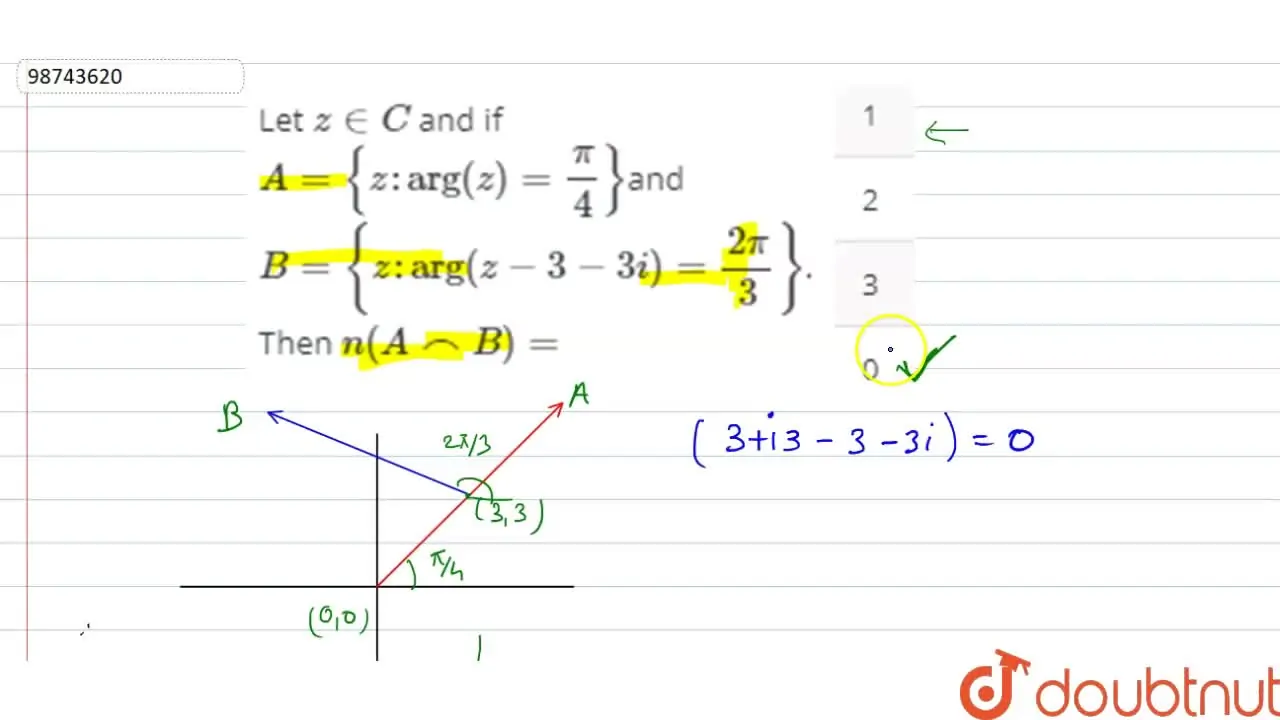Let and if and . Then
A
1
B
2
C
3
D
0
Video Solution
Text Solution
The correct Answer is:D
We observe that arg(z) is the ray originating from origin making angle with OX. So, A is an infinite set of points lying on this ray. The set B is the set of all points on the ray originating from (3,3) making angle with x-axis as shown in fig. 70. The initial points of these two rays are not included in the two sets .

Hence, and so .
|
Updated on:21/07/2023
Related Playlists
- BOOK - OBJECTIVE RD SHARMACHAPTER - COMPLEX NUMBERS EXERCISE - Section II - Assertion Reason Type15videos
COMPLEX NUMBERS
- BOOK - OBJECTIVE RD SHARMACHAPTER - COMPLEX NUMBERS EXERCISE - Exercise131videos
COMPLEX NUMBERS
- BOOK - OBJECTIVE RD SHARMACHAPTER - COMPLEX NUMBERS EXERCISE - Chapter Test59videos
COMPLEX NUMBERS
- BOOK - OBJECTIVE RD SHARMACHAPTER - CIRCLESEXERCISE - Chapter Test55videos
CIRCLES
- BOOK - OBJECTIVE RD SHARMACHAPTER - CONTINUITY AND DIFFERENTIABILITYEXERCISE - Exercise86videos
CONTINUITY AND DIFFERENTIABILITY
Similar Questions
if arg(z+a)=π6 and arg(z−a)=2π3 then
View SolutionIf arg(z+a)=π6 and arg(z−a)=2π3(a∈R+), then
View SolutionFind the complex number z if arg(z+1)=π6 and arg(z−1)=2π3
View SolutionNumber of z, which satisfy Arg(z−3−2i)=π6 and Arg(z−3−4i)=2π3 is/are :
View SolutionIf arg(z+a)=π/6andarg(z−a)=2π/3(a∈R+), then
View SolutionIf |z| = 6 and arg(z) =3π4, find z.
View SolutionIf |z|=2 and arg (z)=π4 , find z.
View SolutionIf arg z=π/4
View SolutionIf argz=π4 ,then
View SolutionTrace the locus of z if arg(z+i)=−π4.
View Solution


